
Keywords: biological control

|
The organizational structure of global gene drive researchFlorian Rabitz, Global Environmental Change, 84. 2024.
Gene drives are a proposed method for large-scale in situ genetic engineering. Keywords: Anastrepha, autocidal control, biological control, integrated pest management, ludens, Mexico, obliqua, SIT |

|
Current Status of the Main Olive Pests: Useful Integrated Pest Management Strategies and Genetic ToolsE. Lantero, B. Matallanas and C. Callejas, Applied Sciences, 13. 2023.
Mediterranean olive cultivation faces challenges in the global environmental change context. Pests and diseases caused by arthropods such as Bactrocera oleae, Prays oleae, and certain vectors of Xylella fastidiosa are expected to increase and spread in part due to this global ... Keywords: Anastrepha, autocidal control, biological control, integrated pest management, ludens, Mexico, obliqua, SIT |
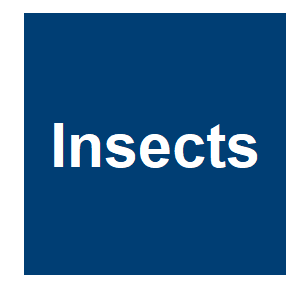
|
Effect of the Sterile Insect Technique and Augmentative Parasitoid Releases in a Fruit Fly Suppression Program in Mango-Producing Areas of Southeast MexicoJ. Cancino, P. Montoya, F. O. Gálvez, C. Gálvez and P. Liedo, Insects, 14. 2023.
The Sterile Insect Technique (SIT), by means of sterile male releases of Anastrepha ludens (Loew), coupled with Augmentative Biological Control (ABC), by releasing the parasitoid Diachasmimorpha longicaudata (Ashmead), was evaluated in a commercial mango production area for one ... Keywords: Anastrepha, autocidal control, biological control, integrated pest management, ludens, Mexico, obliqua, SIT |
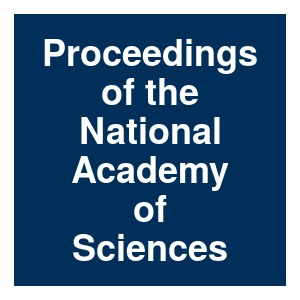
|
A rapidly spreading deleterious aphid endosymbiont that uses horizontal as well as vertical transmissionX. Gu, P. A. Ross, A. Gill, Q. Yang, E. Ansermin, S. Sharma, S. Soleimannejad, K. Sharma, A. Callahan, C. Brown, P. A. Umina, T. N. Kristensen and A. A. Hoffmann, Proceedings of the National Academy of Sciences, 120:e2217278120. 2023.
Endosymbiotic bacteria that live inside the cells of insects are typically only transmitted maternally and can spread by increasing host fitness and/or modifying reproduction in sexual hosts. Transinfections of Wolbachia endosymbionts are now being used to introduce useful ... Keywords: Anastrepha, autocidal control, biological control, integrated pest management, ludens, Mexico, obliqua, SIT |

|
A rapidly spreading deleterious aphid endosymbiont that uses horizontal as well as vertical transmissionX. Gu, P. A. Ross, A. Gill, Q. Yang, E. Ansermin, S. Sharma, S. Soleimannejad, K. Sharma, A. Callahan, C. Brown, P. A. Umina, T. N. Kristensen and A. A. Hoffmann, Proceedings of the National Academy of Sciences, 120:e2217278120. 2023.
Endosymbiotic bacteria that live inside the cells of insects are typically only transmitted maternally and can spread by increasing host fitness and/or modifying reproduction in sexual hosts. Transinfections of Wolbachia endosymbionts are now being used to introduce useful ... Keywords: Anastrepha, autocidal control, biological control, integrated pest management, ludens, Mexico, obliqua, SIT |

|
The Role of Symbiont-Targeted Strategies in the Management of Pentatomidae and Tephritidae Pests under an Integrated VisionE. Gonella and A. Alma, Agronomy, 13. 2023.
The interaction between insects and gut bacterial symbionts is, nowadays, regarded as an important element in the implementation of pest management, in consideration of the urgent need for sustainable alternatives to insecticide use. In this framework, a major tool is symbiotic ... Keywords: Anastrepha, autocidal control, biological control, integrated pest management, ludens, Mexico, obliqua, SIT |

|
The Effect of the Sterile Insect Technique on Vibrational Communication: The Case of Bagrada hilaris (Hemiptera: Pentatomidae)C. Peccerillo, C. E. Mainardi, R. Nieri, J. M. Fouani, A. Cemmi, M. Cristofaro, G. Anfora and V. Mazzoni, Insects, 14. 2023.
The painted bug, Bagrada hilaris, is an agricultural pest in its original areas (Africa, South Asia, and the Middle East), and it has recently been recorded as an invasive species in southwestern part of the US, Chile, Mexico, and two islands in the Mediterranean basin. Its ... Keywords: Anastrepha, autocidal control, biological control, integrated pest management, ludens, Mexico, obliqua, SIT |

|
Additive Effect of Releasing Sterile Insects Plus Biocontrol Agents against Fruit Fly Pests (Diptera: Tephritidae) under Confined ConditionsP. Montoya, E. Flores-Sarmiento, P. López, A. Ayala and J. Cancino, Insects, 14. 2023.
Pest control models integrating the use of the sterile insect technique (SIT) and augmentative biological control (ABC) have postulated that it is possible to obtain a synergistic effect from the joint use of these technologies. This synergistic effect is attributed to the ... Keywords: Anastrepha, autocidal control, biological control, integrated pest management, ludens, Mexico, obliqua, SIT |

|
Biological comparative study between Wolbachia-infected Aedes aegypti mosquito and Wolbachia-uninfected strain, Jeddah city, Saudi ArabiaA. G. Algamdi, F. M. Shaher and J. A. Mahyoub, Saudi J Biol Sci, 30:103581. 2023.
In this study, samples of Wolbachia-infected Aedes aegypti mosquitoes were collected from Al-Safa district in Jeddah city, Saudi Arabia. The presence of Wolbachia bacteria in mosquitoes was confirmed by PCR technique and they were reared and propagated in the laboratory. ... Keywords: Anastrepha, autocidal control, biological control, integrated pest management, ludens, Mexico, obliqua, SIT |
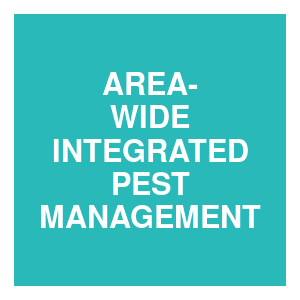
|
Area-wide management of fruit flies in a tropical mango growing area integrating the sterile insect technique and biological control: From a research to an operational programmeLiedo, P., Montoya, P. , and Toledo, J., AREA-WIDE INTEGRATED PEST MANAGEMENT: Development and Field Application, 2021.
The Sterile Insect Technique (SIT) has been successfully used for the control of fruit flies in a number of places in the world. One requirement for its successful application is that wild populations should be at low densities to achieve effective sterile to wild fly ... Keywords: Anastrepha, autocidal control, biological control, integrated pest management, ludens, Mexico, obliqua, SIT |

|
The Possible Role of Microorganisms in Mosquito Mass RearingL. Chersoni, A. Checcucci, M. Malfacini, A. Puggioli, F. Balestrino, M. Carrieri, I. Piunti, M. L. Dindo, P. Mattarelli and R. Bellini, Insects, 12. 2021.
In Europe, one of the most significant mosquitoes of public health importance is Aedes albopictus (Skuse), an allochthonous species of Asian origin. One of the most promising control methods against Aedes albopictus is the sterile insect technique (SIT), which consists of mass ... Keywords: Anastrepha, autocidal control, biological control, integrated pest management, ludens, Mexico, obliqua, SIT |

|
Cloning wildlife and editing their genes to protect them and us.H. Thomasy, NEO-LIFE, 2021.
In December 10, 2020, Elizabeth Ann made history just by being born. She isn’t a British royal, an American married to a British royal, a movie star’s daughter, or even human for that matter. Elizabeth Ann is a ferret—but perhaps the most famous ferret of all time. More ... Keywords: Anastrepha, autocidal control, biological control, integrated pest management, ludens, Mexico, obliqua, SIT |

|
Evaluating unintended consequences of intentional species introductions and eradications for improved conservation managementD. E. Pearson, T. J. Clark and P. G. Hahn, Conserv Biol, 2021.
We conducted a global literature review of these conservation actions to quantify how often unintended outcomes occur and to elucidate their underlying causes. We found that studies reported intended outcomes in 51% of cases, a combination of intended outcomes and unintended ... Keywords: Anastrepha, autocidal control, biological control, integrated pest management, ludens, Mexico, obliqua, SIT |

|
Maintenance management and eradication of established aquatic invadersD. Simberloff, Hydrobiologia, 22. 2020.
The rapid development of technologies based on genetics has engendered excitement about possibly eradicating or controlling terrestrial invaders, and such technologies may also prove useful for certain aquatic invaders. Methods of particular interest, alone or in various ... Keywords: Anastrepha, autocidal control, biological control, integrated pest management, ludens, Mexico, obliqua, SIT |

|
The value of existing regulatory frameworks for the environmental risk assessment of agricultural pest control using gene driveJ. Romeis, J. Collatz, D. C. M. Glandorf and M. B. Bonsall, Environmental Science & Policy, 108:19-36. 2020.
The application of (synthetic) gene drives is a powerful tool to control populations of insects that are agricultural pests, vectors of diseases, or a threat to biodiversity potentially leading to the local or global eradication of a species. The potential use of gene drive ... Keywords: Anastrepha, autocidal control, biological control, integrated pest management, ludens, Mexico, obliqua, SIT |
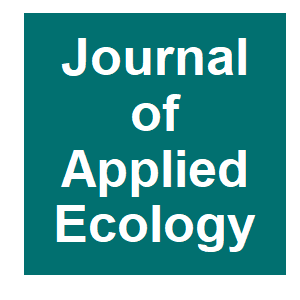
|
Simulating effects of fitness and dispersal on the use of Trojan sex chromosomes for the management of invasive speciesC. C. Day, E. L. Landguth, R. K. Simmons, W. P. Baker, A. R. Whiteley, P. M. Lukacs and A. Bearlin, Journal of Applied Ecology, 2020.
The use of Trojan Y chromosomes (TYC) for controlling invasive species involves manipulating the sex chromosomes of captive-raised individuals. Following release, the offspring of these individuals consist of only one sex, thereby skewing the sex ratio of the invasive population ... Keywords: Anastrepha, autocidal control, biological control, integrated pest management, ludens, Mexico, obliqua, SIT |
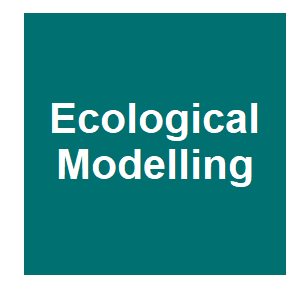
|
Optimal control and analysis of a modified trojan Y-Chromosome strategyM. A. Beauregard, R. D. Parshad, S. Boon, H. Conaway, T. Griffin and J. J. Lyu, Ecological Modelling, 416. 2020.
The Trojan Y Chromosome (TYC) strategy is a promising eradication method that attempts to manipulate the female to male ratio to promote the reduction of the population of an invasive species. The manipulation stems from an introduction of sex-reversed males, called supermales, ... Keywords: Anastrepha, autocidal control, biological control, integrated pest management, ludens, Mexico, obliqua, SIT |

|
CRISPR gene drive efficiency and resistance rate is highly heritable with no common genetic loci of large effectChamper, JW, Z. X.; Luthra, A.; Reeves, R.; Chung, J.; Liu, C.; Lee, Y. L.; Liu, J. X.; Yang, E.; Messer, P. W.; Clark, A. G., Genetics, 212:333-341. 2019.
Gene drives could allow for control of vector-borne diseases by directly suppressing vector populations or spreading genetic payloads designed to reduce pathogen transmission. Clustered regularly interspaced short palindromic repeat (CRISPR) homing gene drives work by cleaving ... Keywords: Anastrepha, autocidal control, biological control, integrated pest management, ludens, Mexico, obliqua, SIT |

|
Yes we can! Exciting progress and prospects for controlling invasives on islands and beyondD. Simberloff, B. Keitt, D. Will, N. Holmes, E. Pickett and P. Genovesi, Western North American Naturalist, 78:942-958. 2018.
Eradication and maintenance management of island invasive species have long histories, and incremental improvements of existing technologies plus occasional novel approaches have led to more challenging targets and increased success rates in certain categories. Many nonnative ... Keywords: Anastrepha, autocidal control, biological control, integrated pest management, ludens, Mexico, obliqua, SIT |
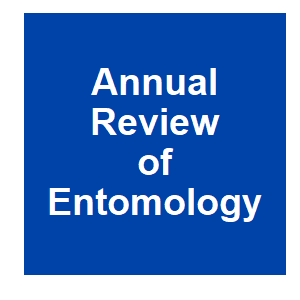
|
Invasion Success and Management Strategies for Social Vespula WaspsP. J. Lester and J. R. Beggs, Annual Review of Entomology, 64:51-71. 2018.
Three species of Vespula have become invasive in Australia, Hawai'i, New Zealand, and North and South America and continue to spread. Economically, their main negative effect is associated with pollination and the apicultural industry. Climate change is likely to exacerbate ... Keywords: Anastrepha, autocidal control, biological control, integrated pest management, ludens, Mexico, obliqua, SIT |
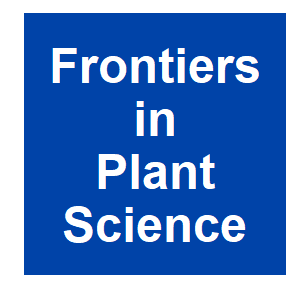
|
Invertebrate Biosecurity Challenges in High-Productivity Grassland: The New Zealand ExampleS. L. Goldson, B. I. P. Barratt and K. F. Armstrong, Frontiers in Plant Science, 7. 2016.
This review explores the unique challenges faced by pasture biosecurity and what may be done to confront existing difficulties. While there is no silver bullet, and limited opportunity pre and at for improving pasture biosecurity, advancement may include increased and informed ... Keywords: Anastrepha, autocidal control, biological control, integrated pest management, ludens, Mexico, obliqua, SIT |
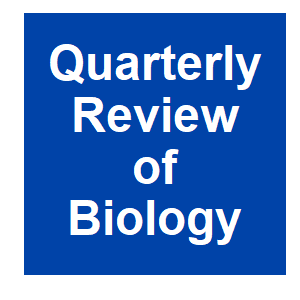
|
Ecological and evolutionary applications for environmental sex reversal of fishA. McNair, P. M. Lokman, G. P. Closs and S. Nakagawa, Quarterly Review of Biology, 90:23-44. 2015.
Environmental sex reversal (ESR), which results in a mismatch between genotypic and phenotypic sex, is well documented in numerous fish species and may be induced by chemical exposure. Historically, research involving piscine ESR has been carried out with a view to improving ... Keywords: Anastrepha, autocidal control, biological control, integrated pest management, ludens, Mexico, obliqua, SIT |
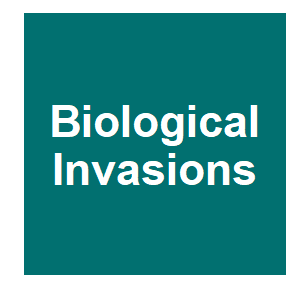
|
Genetic control of invasive fish: technological options and its role in integrated pest managementR. E. Thresher, K. Hayes, N. J. Bax, J. Teem, T. J. Benfey and F. Gould, Biological Invasions, 16:1201-1216. 2013.
Genetic options for the control of invasive fishes were recently reviewed and synthesized at a 2010 international symposium, held in Minneapolis/St. Paul, MN, USA. The only option currently available "off-the-shelf'' is triploidy, which can be used to produce sterile males for a ... Keywords: Anastrepha, autocidal control, biological control, integrated pest management, ludens, Mexico, obliqua, SIT |
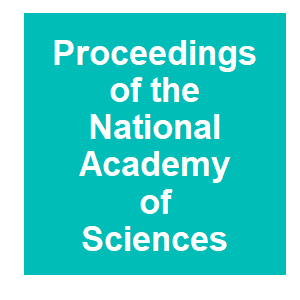
|
Requirements for effective malaria control with homing endonuclease genesDeredec, AG, H. C. J.; Burt, A., Proceedings of the National Academy of Sciences of the United States of America, 108:e874-e880. 2011.
Malaria continues to impose a substantial burden on human health. We have previously proposed that biological approaches to control the mosquito vector of disease could be developed using homing endonuclease genes (HEGs), a class of selfish or parasitic gene that exists naturally ... Keywords: Anastrepha, autocidal control, biological control, integrated pest management, ludens, Mexico, obliqua, SIT |
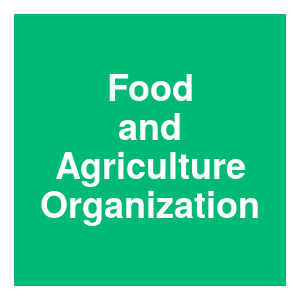
|
Guidelines for the export, shipment, import and release of biological control agents and other beneficial organismsInternational Plant Protection Convention, Food and Agriculture Organization, 2005.
This standard provides guidelines for risk management related to the export, shipment, import and release of biological control agents and other beneficial organisms. It lists the related responsibilities of contracting parties to the IPPC, national plant protection organizations ... Keywords: Anastrepha, autocidal control, biological control, integrated pest management, ludens, Mexico, obliqua, SIT |

Contact
David O’Brochta
Foundation for the
National Institutes of Health
geneconvenevi@fnih.org
RSS

